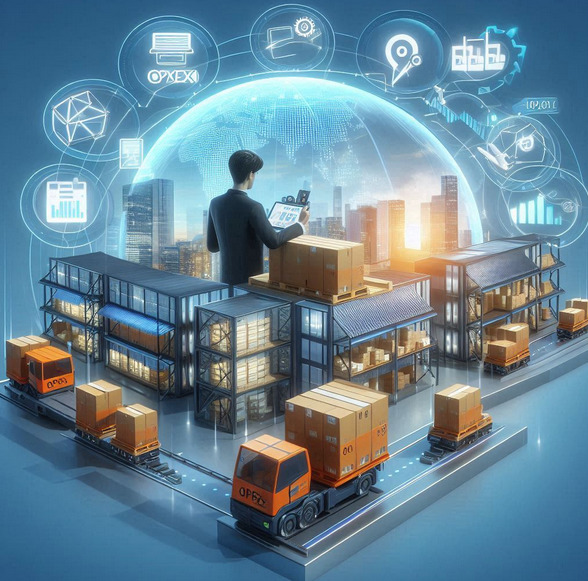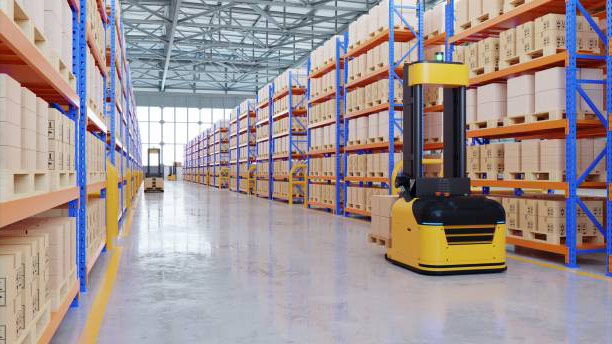 In today’s fast-paced world, automation is no longer a luxury—it’s a necessity. Businesses across industries are turning to robotics to streamline operations, enhance efficiency, and stay ahead of the competition. At the forefront of this technological revolution is Libiao Robotics, a leading innovator in robotic solutions designed to transform the way industries operate.
In today’s fast-paced world, automation is no longer a luxury—it’s a necessity. Businesses across industries are turning to robotics to streamline operations, enhance efficiency, and stay ahead of the competition. At the forefront of this technological revolution is Libiao Robotics, a leading innovator in robotic solutions designed to transform the way industries operate.
In this blog, we’ll explore the groundbreaking products offered by Libiao Robotics, the industries they serve, and why partnering with them can take your business to the next level. If you’re ready to embrace the future of automation, keep reading to learn more—and don’t hesitate to contact us for personalized assistance!
Who is Libiao Robotics?
Libiao Robotics is a global leader in the design, development, and deployment of advanced robotic systems. With a focus on innovation, precision, and reliability, Libiao Robotics has established itself as a trusted partner for businesses seeking to automate their processes. Their state-of-the-art solutions are engineered to meet the unique needs of various industries, ensuring maximum efficiency and ROI.
Key Products by Libiao Robotics
Libiao Robotics offers a diverse range of robotic systems tailored to address specific challenges across industries. Here are some of their standout products:
- Automatic Bagging Systems
- Designed for the packaging industry, these systems automate the bagging process, ensuring speed, accuracy, and consistency.
- Ideal for food, retail, and e-commerce businesses looking to optimize their packaging lines.
- Robotic Sorting Systems
- Leveraging advanced AI and machine learning, these systems can sort items with unparalleled precision.
- Perfect for logistics, warehousing, and manufacturing sectors.
- Custom Robotic Solutions
- Libiao Robotics specializes in creating bespoke robotic systems tailored to your business’s unique requirements.
- From assembly lines to material handling, their custom solutions are designed to deliver exceptional results.
- Industrial Robotic Arms
- High-performance robotic arms that can handle repetitive tasks with precision and efficiency.
- Widely used in automotive, electronics, and heavy industries.
Industries Served by Libiao Robotics
Libiao Robotics’ innovative solutions are transforming a wide range of industries, including:
- E-commerce and Retail: Streamline order fulfillment, packaging, and sorting processes to meet growing consumer demands.
- Food and Beverage: Ensure hygiene, accuracy, and speed in packaging and sorting operations.
- Logistics and Warehousing: Optimize inventory management and reduce operational costs with automated systems.
- Manufacturing: Enhance production efficiency and reduce downtime with cutting-edge robotic solutions.
- Healthcare: Improve precision and safety in medical device assembly and packaging.
No matter your industry, Libiao Robotics has the expertise and technology to help you achieve your automation goals.
Why Choose Libiao Robotics?
- Innovation at Its Core: Libiao Robotics is committed to pushing the boundaries of what’s possible with robotics, ensuring you always have access to the latest advancements.
- Customizable Solutions: Their team works closely with clients to develop tailored solutions that address specific challenges.
- Proven Track Record: With a global client base and countless success stories, Libiao Robotics has earned a reputation for excellence.
- Sustainability: Their systems are designed to reduce waste and energy consumption, helping you achieve your sustainability goals.
Unlock the Power of Automation with Libiao Robotics
The future of business lies in automation, and Libiao Robotics is here to help you stay ahead of the curve. Whether you’re looking to enhance efficiency, reduce costs, or improve product quality, their robotic solutions are the answer.
Contact Us Today!
Ready to take your business to the next level? Don’t wait—contact us today to learn more about Libiao Robotics’ products and how they can benefit your operations. Our team of experts is here to answer your questions, provide personalized recommendations, and help you implement the perfect automation solution.
📞 Call us now or 📧 send us an email to schedule a consultation. Let’s build the future of your business together!



